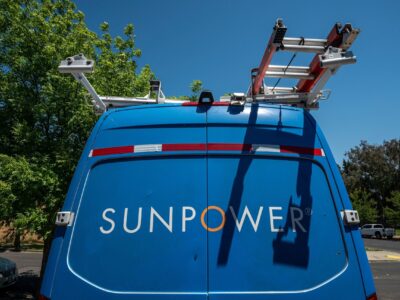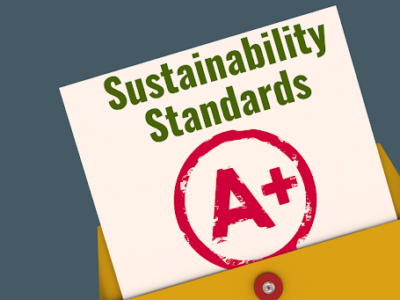(Bloomberg) —
On Sunday, millions of people will tune into the Super Bowl and watch the game’s commercials. Then they’ll look down at their phones to see, most likely, even more commercials.
America’s favorite sporting event is a frenzied zenith for the nation’s advertising industry, which uses the weekend to bombard attentive consumers with messages on TVs and online. And every internet ad requires an unseen amount of energy to run — a footprint that, until recently, has not been properly measured.
“It’s never talked about,” says Amy Williams, an advertising veteran who runs Good-Loop, a London-based media firm. “It’s not like chopping down a tree. You can’t see it or feel it. So it’s really easy to ignore.”
Good-Loop is one of a handful of companies trying to track, and reduce, the greenhouse gas emissions of the online ad complex. Part of the difficulty is the way the wider market works. Unlike pricey Super Bowl spots, which are bought in handshake deals months in advance, digital billboards are typically sold in automated, rapid-fire auctions that often involve dozens of different web companies for every transaction. Each of those fires up an untold number of power-hungry computer servers for every ad.
Measuring the electricity used for all this machinery is not easy. A 2018 study from Finnish researchers estimated that running all the ads on the internet during that year emitted somewhere between 11.5 and 159.9 million tons of carbon dioxide equivalent. The high end of that broad guess is more than six times the estimated emissions of Bitcoin mining for 2018.
For its tracking, Good-Loop developed a piece of software that works like an online cookie — instead of monitoring browsing histories, it measures how many middlemen are behind each digital ad, then calculates the energy demand. The company used popular Super Bowl spots to gauge the big game’s impact; by one count, the 10 most popular ads from last year’s match were watched online some 422 million times. By Good-Loop’s math, those commercials accounted for 422 tons of emissions. Or the equivalent of 2,800 flights between the Super Bowl cities of Philadelphia and Kansas City.
“It’s ridiculously high,” says Williams. Her company is working with ad agencies and major brands — many of whom have made recent net-zero commitments — to provide detailed emission reports and encourage them to drop some computing-heavy methods of running ads. This work is in the pilot phase.
Scope3, another startup from ad industry veterans, hopes that exposing the guts of digital marketing will limit its waste. The company calculates emissions of online publishers based on how much effort is involved to produce and distribute their ads.
To demonstrate, Andrew Sweeney, Scope3’s co-founder and chief technology officer, pulls up a dashboard with a map of the BBC.com. It shows that the news site works with digital ad networks from Google and nine other companies, which each run services to auction off BBC’s real estate. Such a “premium publisher,” with relatively few networks, generates about a fifth of a gram of carbon emissions every time someone sees an ad, according to Sweeney.
He pulls up a similar dashboard for a popular tabloid. (He doesn’t want to name it.) This one plugs into hundreds of networks, giving it more than twice the carbon footprint per ad. Scope3 then hands this sort of report to a marketer and advises them to stop spending with the worst offenders. Sweeney calculates that if advertisers dropped just the lower 5% of websites on this list, it would eliminate a fifth of the industry’s overall emissions. Sweeney notes that the worst offenders are typically the kind of salacious websites that big marketers want to avoid anyway. “It’s all the bottom-of-the-barrel junk,” he says.
The ad industry has railed against crummy websites and convoluted online systems for years, to little effect. But privacy changes are making online cookies obsolete, which could cut out some of the energy-intensive middlemen from the market.
Neither Good-Loop or Scope3 can yet accurately track huge internet destinations like Google’s YouTube and Facebook — the “walled gardens” in ad lingo—but these giants have set ambitious goals to run on clean energy that, if they work, could improve the internet’s efficiency on their own.
Still, another trend is moving in the opposite direction. More smart TVs and streaming services are starting to run ads using automated systems rather than old-fashioned ad-buying. So, if someone watches the Super Bowl on Hulu, or flips on Netflix afterwards, they could witness the same invisible commercial infrastructure that runs online.
Matti Pärssinen and Mikko Kotila, two of the Finnish researchers behind the 2018 study, recently looked at how telecom equipment upgrades improved energy usage. The shift to more online video and smart TVs, they wrote in an email, “ends up eating all the energy-efficiency gains” from those upgrades.
To contact the author of this story:
Mark Bergen in Los Angeles at mbergen10@bloomberg.net
© 2023 Bloomberg L.P.





